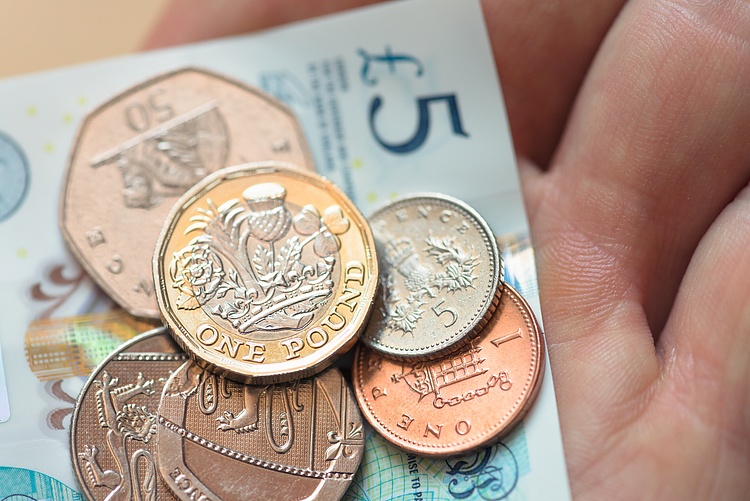- The Pound Sterling struggles to hold recovery, driven by the upbeat preliminary S&P Global/CIPS PMI report for April.
- Investors speculate that the BoE will shift to rate cuts in the June or August meeting.
- BoE Haskel wants to see more slack in labor demand to gain confidence that inflation will sustainably return to the 2% target.
The Pound Sterling (GBP) turns sideways around 1.2450 against the US Dollar (USD) in Wednesday’s early American session after bouncing back strongly from a five-month low at around 1.2300. The GBP/USD pair struggles for a direction as the US Dollar consolidates after a steep correction on Tuesday. The US Dollar Index (DXY), which measures the US Dollar’s value against six major currencies, attempts to establish a firm footing near 105.70. Also, uncertainty over the BoE’s rate-cut timing has paused recovery in the Pound Sterling.
On Tuesday, the USD came under pressure after S&P Global surprisingly reported weak preliminary US PMI numbers for April. The Manufacturing PMI dropped below the 50.0 threshold, signalling a contraction in the sector, and the Services PMI fell sharply to 50.9.
In the same session, the Pound Sterling delivered a sharp upside move after the S&P Global/CIPS reported a strong United Kingdom preliminary PMI report for April. Surprisingly, the Services PMI jumped to 54.9 from the prior reading of 53.1. Investors had forecasted the Services PMI to drop slightly to 53.0. On the contrary, the preliminary Manufacturing PMI surprisingly dropped below the 50.0 threshold that separates expansion from contraction after being in the expansion territory since January. The factory PMI fell sharply to 48.7 from expectations and the prior reading of 50.3.
The agency also showed that new business volumes increased across the private sector as a whole in April. “The rate of growth was the strongest since May 2023, but the expansion was centred on the service economy as manufacturers saw a moderate downturn in order books.”
Strong new business volumes usually indicate an upbeat consumer spending outlook, which could boost inflationary pressures and allow the Bank of England (BoE) to delay interest-rate cuts. The scenario bodes well for the Pound Sterling.
Daily digest market movers: Pound Sterling struggles to extend recovery
- The Pound Sterling struggles to extend recovery above 1.2450 as firm expectations for early rate cuts by the Bank of England offset the impact of the upbeat S&P Global/CIPS PMI report.
- While a rate cut is expected by the BoE is expected before the Federal Reserve (Fed), traders remain split between June and August policy meetings as the start of the easing cycle. “It is between June and August, we are leaning slightly towards August on the basis that one of the key things the Bank is looking at is services inflation,” said James Smith, economist at ING Financial Markets. “If services inflation is a little bit stickier, I think that tilts the balance a little bit further towards August over June, but it’s a pretty close call to be honest.”
- Also, distinct commentaries from BoE policymakers keep the timing of the BoE’s first interest rate cut uncertain. Last week, BoE deputy governor Dave Ramsden said inflation could decline faster than the pace projected by the central bank in its latest forecasts. Ramsden remains confident that inflation will return to the 2% target in May and will remain there for the next three years.
- On the contrary, BoE policymaker Jonathan Haskel is worried about inflation remaining persistent due to tight labor market conditions. Haskel said, “The labour market is central to the inflation aspect.” He added that he wants to see the job market easing further to be confident about inflation returning to the 2% target, reported Reuters.
Technical Analysis: Pound Sterling recovery stalls near 1.2450
The Pound Sterling recovers sharply from a five-month low of 1.2300 against the US Dollar. The GBP/USD pair moved higher to 1.2450 on Tuesday and remains at around this level at the time of writing. The upside is limited near the supply zone, placed in a tight range of 1.2500-1.2520. The near-term outlook of the Cable remains weak as the 20-day Exponential Moving Average (EMA) at 1.2509 is declining.
The 14-period Relative Strength Index (RSI) rebounds to 40.00, which could act as a ceiling ahead. The speculation for a bullish reversal could emerge if the momentum oscillator decisively breaks above 40.00.


